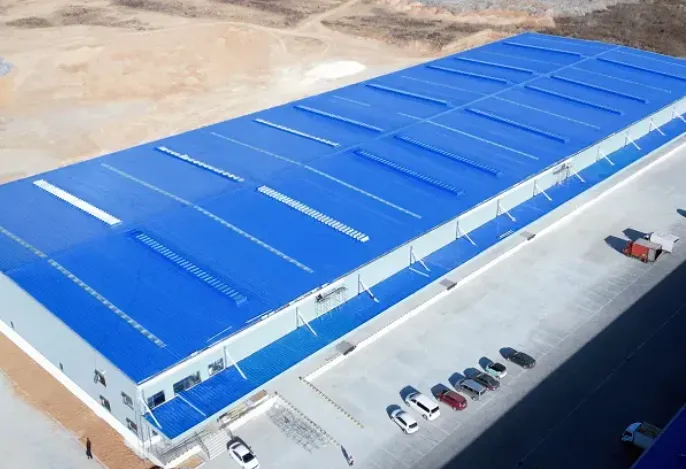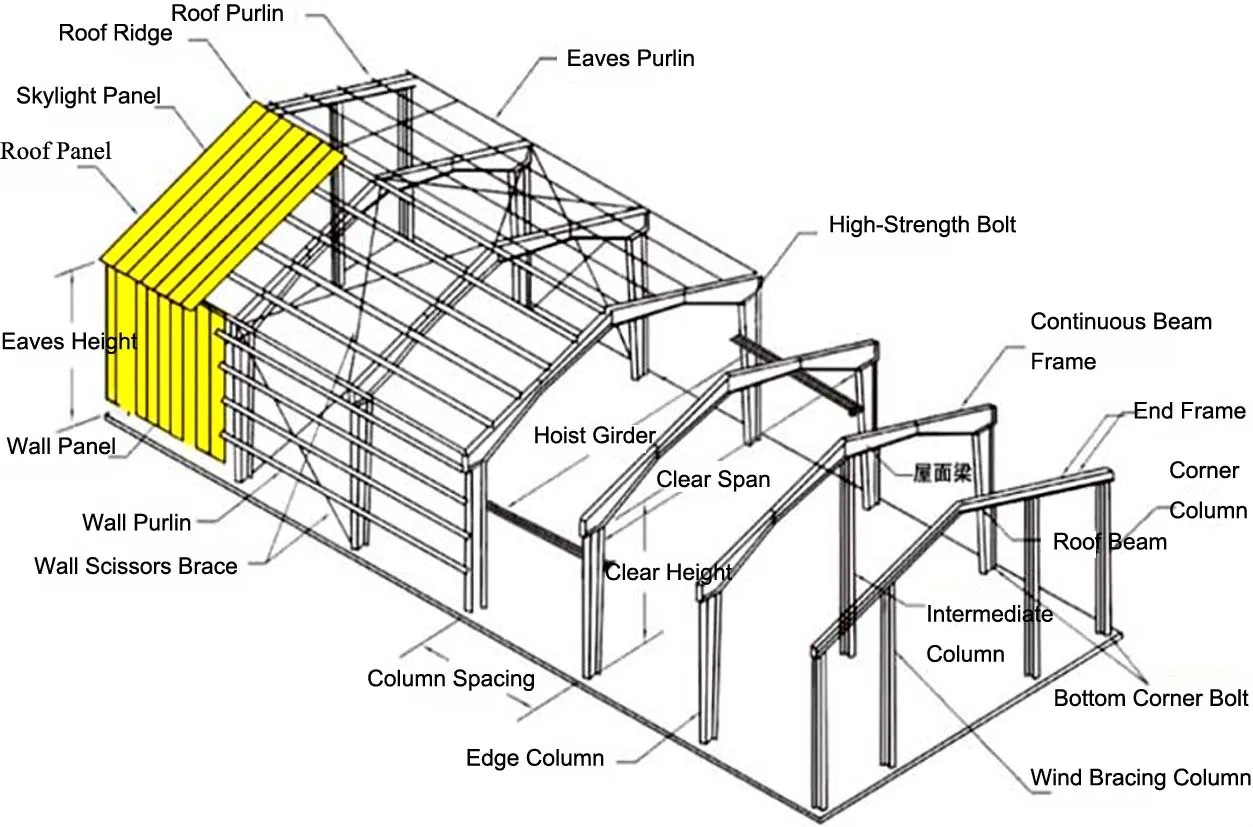Time:2025-11-17 08:02:13 Source:Sanjian Meichen Steel Structure
Steel warehouse failures are almost never caused by poor drawings—they start with improper materials and shortcuts in safety checks. Once a project goes off track, unexpected risks keep growing.
To ensure reliable load-bearing capacity in steel warehouse structures, insist on third-party material testing, strict change documentation, regular independent inspections, and robust risk management starting with procurement. True safety combines design, quality materials, and diligent oversight at every project stage.

Every project I’ve managed has proven one thing: paper designs and beautiful models mean nothing if low-quality steel arrives on-site or contractors cut corners. Load-bearing capacity arises from a continuous, intentional focus on quality from day one.
Whenever a warehouse goes up, the real battle is keeping risks out—from material delivery to final handover. I emphasize to every client and team member that savings made by skipping metal verification or third-party checks often end up costing millions later on. I have witnessed credible suppliers get replaced by cheaper, unverified sources, and the results have included bent frames and serious delays.
My process begins with strict supplier vetting, ongoing audit of all materials, and real-time quality checks—especially during each delivery, not just at the end. For true assurance, I treat post-delivery third-party inspections and seismic compliance reviews as essential, not optional. True peace of mind is built step by step.
I always recommend investing a bit more up front in safety, because it’s far less than the cost of future repairs or legal battles.
Many project failures start with "cost optimization" that quietly strips away essential seismic details. In earthquake-prone areas, what you cannot see can still destroy your investment.
Evaluating seismic resistance involves reviewing design drawings for stiffeners and node reinforcement, checking compliance with relevant codes, and always requesting detailed seismic calculations and third-party validation. Never accept vague answers on seismic details.

On more than one project, I’ve faced the temptation of low bids promising the same warehouse for less money. But I know too well that some suppliers cut corners you would never notice—like omitting crucial seismic elements hidden inside columns and joints.
The real test of seismic resistance begins before a single beam is welded. I take the time to look at detailed drawings and ask engineers about their seismic methods—what kind of strengthening is included at each connection, how stiffeners are specified, and what codes they follow.
One thing I advise clients: beware when a bid comes in significantly below others. Probe deep into the "value engineering" and ask for proof that all seismic provisions match or exceed your region’s requirements. I sometimes insist on bringing in independent structural engineers to review their calculations or commission software-based dynamic simulations, especially on projects in active seismic zones.
Prospering in the steel industry taught me not to accept general promises—insist on detailed compliance records, submission of all relevant reinforcement diagrams, and third-party validation at every stage. Skimping on seismic details to save a few thousand up front can lead to catastrophic losses, both in life and property.
Most hidden dangers appear during rushed material deliveries and last-minute design tweaks. If unchecked, these risks stay buried until the warehouse is in use.
To verify structural safety before installation, implement rigorous on-site and off-site third-party inspections, link safety review milestones to every step in the procurement and construction cycle, and require documented approval for every material and component before installation begins.

If there’s a secret to keeping warehouses safe, it’s this: the best companies in our industry never expect internal teams to see every issue. Third-party inspections have exposed flaws even top engineers miss—like swapped steel grades, poor welding, and deviations from shop drawings.
Early in my career, after one major project delay, I began assigning external, certified inspectors to every major milestone: material arrival, prefabrication, and structural assembly. Each inspection is thorough. We check mill certificates for every steel batch, inspect weld quality on-site, and double-check anchor placements before pouring concrete.
Our process doesn’t stop at paperwork—inspectors physically test samples and require supplier corrections when anything underperforms. Greater scrutiny before installation also means checking for updates to construction standards, code changes, and confirming any project-specific requirements from local building authorities.
I recommend making independent inspection reports required in your contract and refusing to accept unfinished or unaudited work. Failures often result not from one big mistake, but from a series of unchecked shortcuts. Safety is never negotiable; it is methodical and must be independently verified.
Risk builds up over months or years as warehouses expand, workloads increase, or users alter the layout without expert review. To assess potential structural risks, create a living document of warehouse usage, monitor every new change to loads or equipment, require engineer sign-off on all modifications, and prioritize annual safety audits.

Experience shows that most structural collapses and near-misses happen long after the grand opening. Suddenly the client calls: they added new shelves, or started storing heavier machinery—and now beams are sagging.
I impress on every owner and project engineer that a steel warehouse’s lifespan depends on continuous risk management, not just a great startup design. At project acceptance, I include documented recommendations for handling expansions, load increases, and major equipment installation. We hold orientation meetings with facilities teams, showing them how to record all planned changes, from new racking systems to overhead cranes. Periodically, we re-evaluate load distribution and update risk logs.
Here’s the process I use for ongoing risk assessment:
| Change Type | Example | Action Required | Signed Off By |
|---|---|---|---|
| Load Increase | Add more inventory | New load calculation & review | Engineer |
| Structural Expansion | Build extra wing | Complete structural reassessment | Architect |
| Equipment Upgrade | Heavy HVAC installation | Foundation & column recheck | Inspector |
| Repurposing Area | Vehicle path added | Floor loading review | Supervisor |
This ongoing log prevents unclear responsibility and helps identify weak points before failure. I recommend facility managers schedule annual checkups with independent engineers and keep records in a central, accessible place. Unexpected changes are normal. Surprises in safety should never be.
Verbal approvals and rush orders cause chaos. Undocumented design changes often lead to costly mistakes and major disputes.
To manage design changes, enforce a strict written change order policy, with double signatures from client and supplier; store all revised drawings and instructions in a centralized, version-controlled system for easy reference.
This is why all my projects use a robust, documented change order system. Every change starts with a written request, a technical revision drawing, and a specific impact statement, all signed digitally by the buyer and engineering firm. Where many still rely on email or meetings, I push for project management software that keeps version histories and clear audit trails.
At every weekly progress review, the team checks these records, confirms whether changes have been implemented, and updates the drawings. I make it clear to all contractors and suppliers: any undocumented divergence is grounds for rejection and rework at their expense. Rigorous change management keeps everyone accountable and stops disputes before they begin. If something goes wrong, there’s a clear record of responsibility—and safety is never compromised by a missed verbal promise.
Steel warehouse safety depends on uncompromising inspection, full transparency, and continuous risk management—never leave safety to chance or unchecked changes.